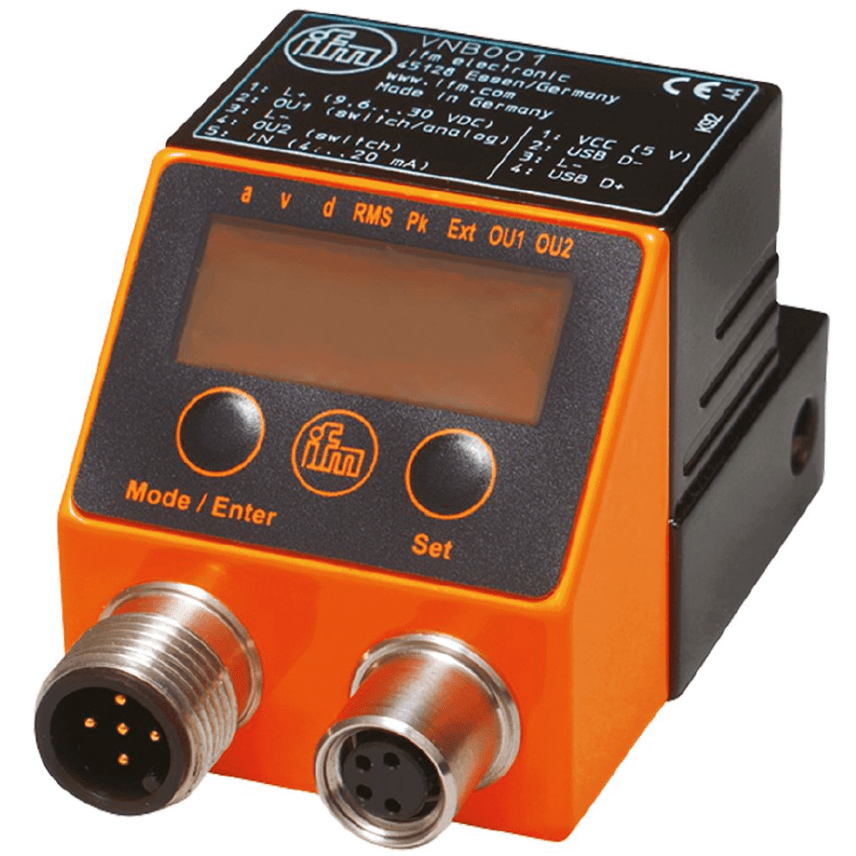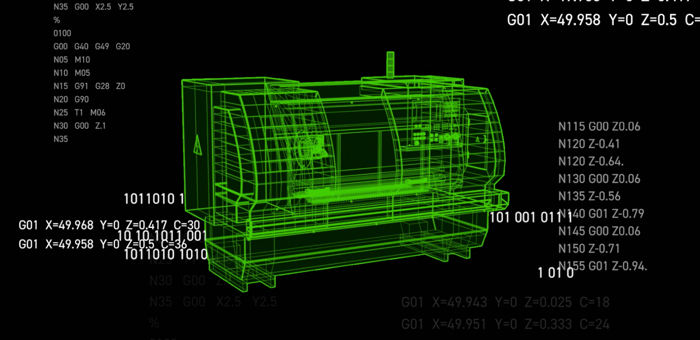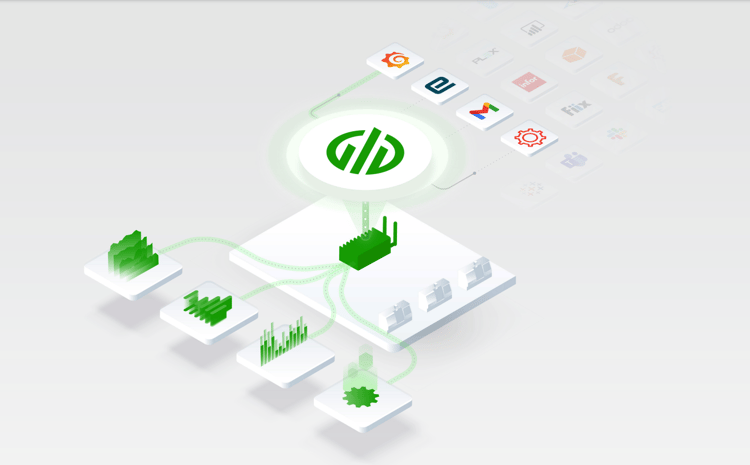Industrial IoT Sensors
Industrial IoT sensors are a critical component of an IoT infrastructure. These sensors connect to numerous machine points and may be located at the machine level or spindle/production unit level to capture real-time production and condition data.
Supporting the embedded machine sensors, these ruggedized smart sensors are a key data collection component to enable a connected factory. They ensure that all required data is measured and sent to the cloud, accurately reflecting the condition they’re set to monitor.
Image Source: ifm

IIoT Sensors: A Complete View of Production and Conditions
What are IIoT Sensors?
Industrial IoT sensors perform the "sensing" function of the IIoT ecosystem. They measure various conditions and send those data points back to gateways to be moved to the cloud. These sensors may gather thousands of data points per minute.
A key distinction is that IIoT sensors send data back to a gateway, edge device, or platform in real-time. These robust devices operate and respond as data is generated, making IIoT control possible. They work within the machine data platform seamlessly with other components.
 Examples of IIoT sensors from ifm, including temperature, flow, and vibration.
Examples of IIoT sensors from ifm, including temperature, flow, and vibration.
What Parameters can IIoT Sensors Capture?
IIoT sensors represent a wide variety of devices, each designed to measure a specific condition within a specified area. Although modern machines may be equipped with embedded sensors, legacy assets often have no internal sensors to collect data from. There are several categories of sensors that are available to ensure all necessary data points can be collected:
Equipment Status
Equipment status sensors are physically located on a machine. They have two functions, and one is to monitor the machine's status. This status may include simple condition status like on/off, or multiple sensors may measure machine speed, motor rotation speed, and spindle speed.
This first function aims to collect and send data to the cloud-based machine data platform. From there, instructions or actions can be sent in response to ensure the correct operating status. If the condition can be restored automatically, sensors trigger an automated response. If not, alerts may be sent to operators or mechanics.
At the same time, these sensors monitor machine or spindle status. They collect additional data that can be used by operators or maintenance to keep production running within specification. This includes temperature, vibration, pressure, and even high-frequency data generated by motors.

Environment Monitoring
Many products require controlled conditions to maintain specific temperature or humidity ranges. These sensors monitor conditions at or near machines and may be located strategically throughout a plant to monitor temperature, air pressure, humidity, fumes, and other variables.
Data from these sensors are sent to the cloud-based machine data platform where advanced analytics sends control instructions to keep these variables within programmed ranges. If variances are detected, they can trigger alarms and alerts to operators or maintenance staff to intervene.
Production Space
Many manufacturing operations utilize robotics to produce finished goods. These robots may be autonomous or collaborative, working alongside human operators. These IIoT sensors are essential in advanced manufacturing environments because they help identify the proximity of workers to robots so that staff can interact safely and optimize production efforts.
What are the Different Types of Smart Sensors for IoT?
While there are hundreds of variations of sensors across diverse industries, common sensor types include:
- Motion Sensors: As one of the oldest and most common sensor types, motion sensors may detect the motion of products, people, or vehicles. They may also be used to stop or start an action. Motion sensing is critical for measuring machine and spindle speeds, flow rates, and other conveyance methods.
- Temperature: Temperature sensors measure the current temperature of machine parts, products, or ambient conditions. They can send alerts and trigger automated responses if temperature ranges move too high or low.
- Humidity: Like temperature, humidity may be ambient condition-driven or product-driven. Humidity sensors can be programmed appropriately based on ranges.
- Pressure: In many cases, industries that use gas or steam require specific pressure for machine functionality. Pressure gauges may also be used in industries where the hydraulic control of machines is critical.
- Weight: Also known as force sensors, weight sensors control the force exerted by automatic arms, robots, auto-dispense mechanisms, and other motion components on a machine. They may also be used in metering product fill or raw material feed at the machine level.
- Vibration Sensors: Parts, shafts, bearings, and other parts may fail or become misaligned. Vibration sensors alert operators and maintenance when vibration ranges become too much for safe operation or when machinery needs to be repaired.
- Visual Sensors: Visual sensors have many applications in IIoT technology. Some measure the color of the material, while others are more precisely tuned to detect flaws and trigger the rejection of parts.
- Sound Sensors: Sound, or ultrasonic sensors, use echolocation to sense an object's location, angle, and speed.
What Software is Required for IIoT Sensors?
IIoT sensors may have little to no software, or they may have configurable software depending on the complexity of the unit and its end-use.
The challenge here is that the data provided by smart sensors is raw and varies from sensor to sensor.
This is where machine monitoring and IoT solutions like MachineMetrics help.
MachineMetrics is able to integrate directly with equipment, or connect to sensors. This ensures complete connectivity to all machine assets as well as data collection from any conditions a user would like to track.
The importance of a solution like MachineMetrics is that it automates the data collection and the standardization of the data.
The common model of data enables the population of pre-built reports and dashboards and immediately enables actionability on the data.
Further, this data can easily be pushed into other critical systems, such as a CMMS or MES, to ensure these management systems rely on accurate production and condition data.

Ensuring Connectivity to All IIoT Sensors and Equipment
MachineMetrics is the leading platform to collect, monitor, analyze, and drive action with manufacturing equipment data. Our platform easily captures data from your manufacturing equipment and provides a complete toolkit to drive actionable insights for frontline workers and other factory floor systems that improve the efficiency and quality of production.
Whether modern equipment, legacy asset, simply an environmental condition, you can easily connect and collect data across all your machines, sensors, and devices for complete operational visibility.
Want to see the platform in action? Book a Demo Today.